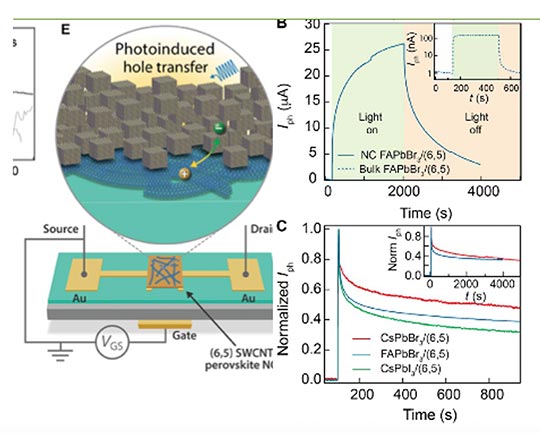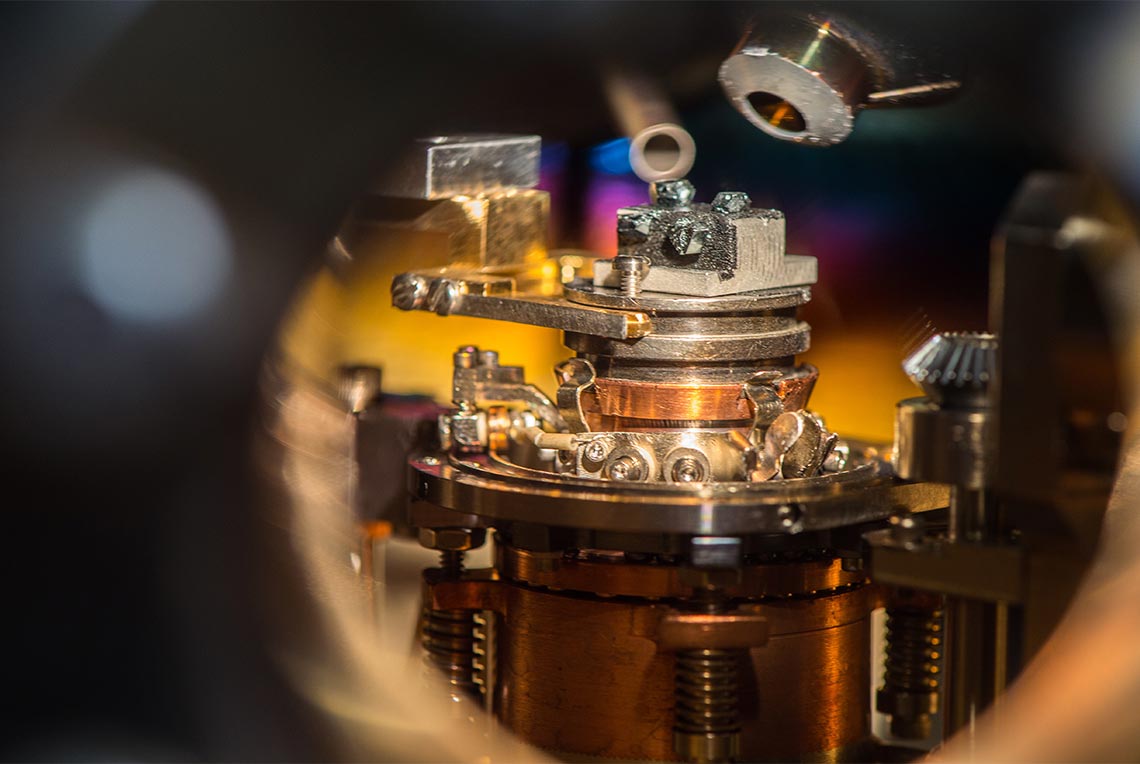Low-Energy Room-Temperature Optical Switching in Mixed-Dimensionality Nanoscale Perovskite Heterojunctions
2021
For some applications, metal halide perovskite materials have problematically high-ion migration properties. However, that same property can also be exploited as a beneficial feature for certain technologies.
Scientific Achievement
We demonstrate a phototransistor composed of semiconducting carbon nanotubes (CNTs) decorated with perovskite nanocrystals, which show long-lived photoinduced memory effects.
Significance and Impact
Solid-state optoelectronic memory technologies and optical switches could replace electrically stimulated resistive switches in photonic integrated circuits and dynamically configurable neural networks for energy-efficient, brain-inspired (neuromorphic) computing and information processing.
Research Details
- Constructed a nano-heterojunction from perovskite nanocrystals decorated onto carbon nanotube arrays.
- Showed, upon light excitation, a dramatic change in photoconductivity for 1000s of seconds after excitation.
- Proved process to be driven by ion migration and optically written and erased easily with voltage pulses.
Related People
Joseph Luther
National Renewable Energy Laboratory
Jeffrey Blackburn
National Renewable Energy Laboratory

Phototransistors of (6,5) single-wall CNTs decorated with perovskite nanocrystals were fabricated on pre-patterned silicon chips. Upon illumination, the conductivity between the source and drain electrode rises dramatically and remains elevated for thousands of seconds after the light is turned off. This effect arises from photoinduced ion migration within the perovskite array and opens the door to a variety of new energy-efficient applications such as neuromorphic computing and quantum information processing.









